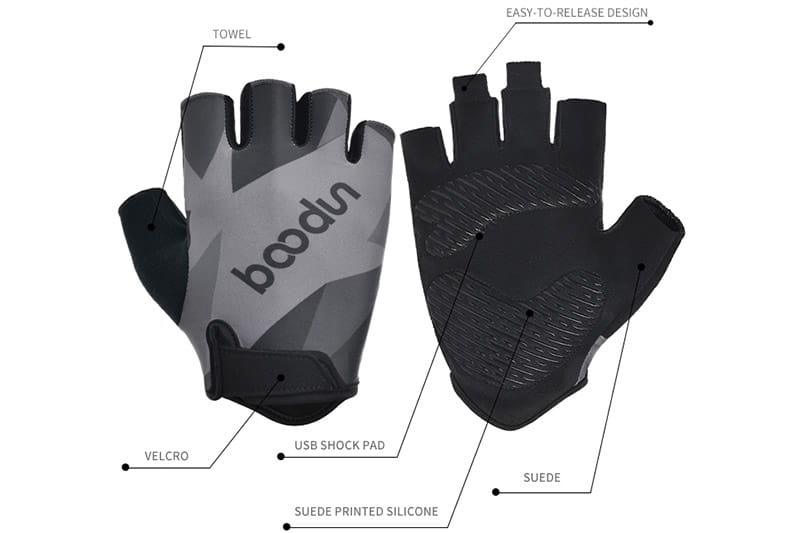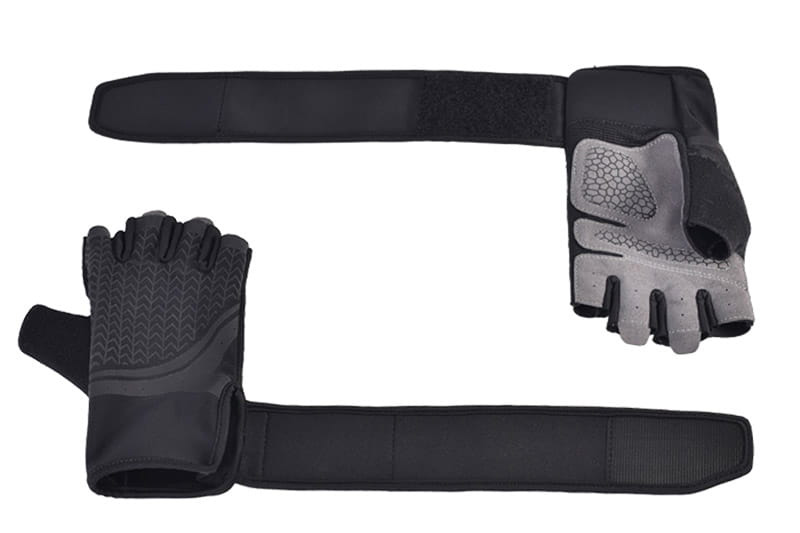Cycling gloves and fitness gloves are commonly used by athletes. Although they are both gloves, they have many differences. Below are the characteristics, similarities, and differences between cycling gloves and fitness gloves.

Cycling gloves:
Cycling gloves are designed primarily for cyclists. They are usually made of lightweight, breathable material with cushioning on the palm and fingers to provide extra comfort and shock absorption. Cycling gloves may also have special features such as touch screen compatibility, reflective designs to improve night visibility, and adjustable straps to ensure a snug fit.
The main benefit of cycling gloves is to provide extra grip. The cushioning on the palm and fingers helps reduce hand fatigue and the risk of injury. The grip provided by cycling gloves also helps cyclists maintain control of the handlebars on wet or slippery surfaces.
In addition to providing comfort and support during long rides, cycling gloves also have functional features. For example, touch screen compatibility allows riders to use their smartphones or GPS devices without taking off their gloves. Some cycling gloves also have reflective designs to improve safety during night rides.

Fitness gloves:
Fitness gloves are designed for various types of training, including weightlifting and cross-training. They typically use heavier, more durable materials such as leather or synthetic leather and may have additional cushioning on the palm and fingers to protect against calluses and blisters.
Unlike cycling gloves, fitness gloves may not have specialized features such as touch screen compatibility or reflective designs. However, they can provide extra grip and support for a variety of different exercises, allowing athletes to lift heavier weights or perform more repetitions without putting excessive pressure on their hands or wrists.

Similarities between cycling gloves and fitness gloves:
Cycling gloves and fitness gloves are both designed to provide better grip, comfort, and protection. They can also prevent excessive friction and injury to the hands, improving sports performance and experience.
Differences between cycling gloves and fitness gloves:
The design and materials of the two types of gloves differ. Cycling gloves use lightweight, breathable materials and a snug fit to provide comfort and a close connection to the handlebars. Fitness gloves, on the other hand, typically use heavier, more durable materials and may have a looser fit to allow for more flexibility and range of motion. In addition, cycling gloves may have special features such as touch screen compatibility and reflective designs, while fitness gloves may not have these specialized features.
Cycling gloves and fitness gloves are both designed to provide extra protection and comfort. Although they are designed for the same purpose, they differ significantly in terms of materials, design, and features.

Different materials:
Cycling gloves usually use lightweight, breathable materials such as mesh. These materials help to wick away sweat and heat, keeping the hands dry and comfortable. Fitness gloves, on the other hand, typically use more durable materials such as leather or synthetic leather. These materials provide better protection and grip, preventing excessive friction and injury to the hands.
Different designs:
Cycling gloves typically have a snug fit to ensure a close connection to the handlebars and may have special features such as touch screen compatibility and reflective designs to improve the safety of the rider. Fitness gloves require more space to provide enough flexibility and range of motion. Therefore, fitness gloves may have a looser fit to allow for more hand movement.
Different features:
The functions of cycling gloves and fitness gloves also differ. Cycling gloves typically have a special grip function to help riders maintain control of their handlebars on wet or slippery surfaces. In addition, some cycling gloves have special features such as touch screen compatibility and reflective designs to improve the rider's safety and convenience. Fitness gloves are usually used to increase grip and protect the hands from excessive wear and tear or injury, allowing for heavier weightlifting and repeated movements.
In conclusion, cycling gloves and fitness gloves differ significantly in terms of materials, design, and function. Cycling gloves typically use lightweight, breathable materials and special designs to improve the rider's comfort and safety. Fitness gloves use more durable materials to provide better protection and grip, allowing for heavier weightlifting and repeated movements. Depending on the type of exercise and personal preferences, you can choose gloves that are suitable for you.